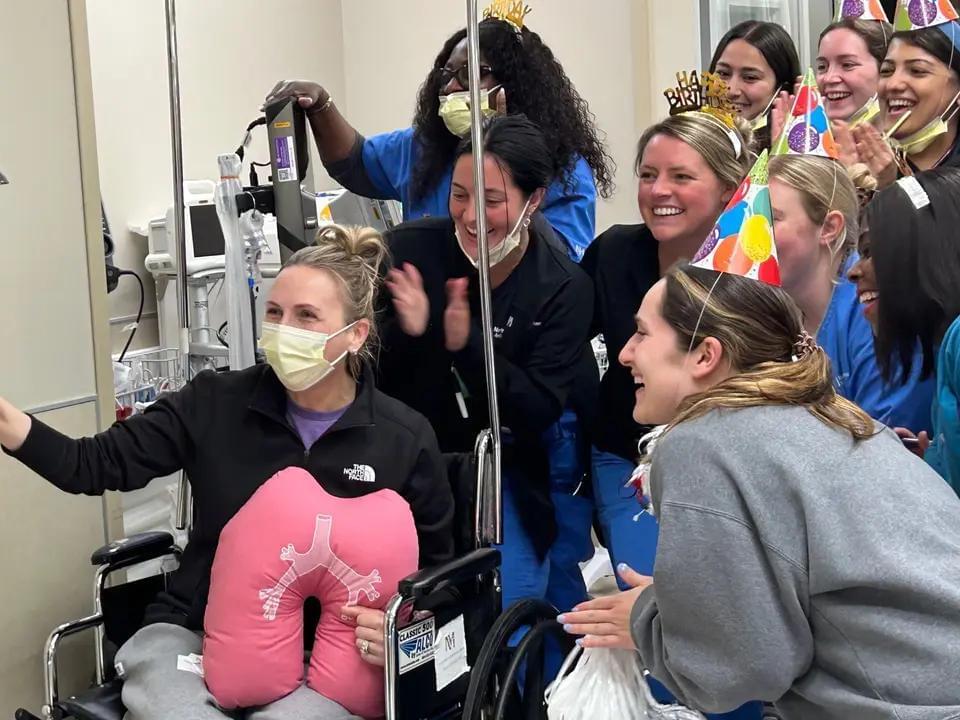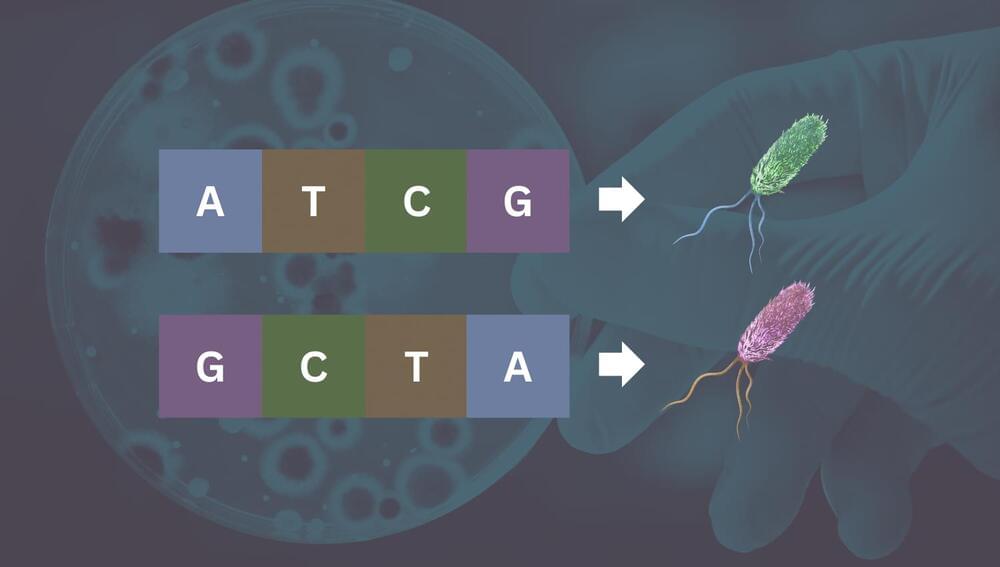An epidemiologist makes the case that a rush of research to stop a swine flu outbreak led to an accidental lab release of an extinct virus. Preparing for one pandemic triggered a different one.



CHICAGO — Surgeons at Northwestern Medicine successfully completed a double-lung transplant on a Minnesota woman who was battling cancer. In 2017, at just 34 years old, Amanda “Mandy” Wilk initially suspected she had food poisoning. However, her lingering symptoms prompted further investigation, ultimately leading to her diagnosis of stage 4 colorectal cancer.

Hi folks, I’d like to invite you to a webinar I will be giving on my research, hosted by the Foresight Institute! It takes place this Friday at 12:00pm CST. You can sign up on the linked page. The donation is optional, so if you don’t want to donate, you can just put $0.00. I hope to see you there!
Biotech and Health Extension sponsored by 100 Plus Capital
Viruses inside vaults: a powerful new gene therapy delivery system
Bio: Logan Thrasher Collins is a synthetic biologist, author, and futurist. He is currently a PhD candidate in biomedical engineering at Washington University in St. Louis. Logan began engaging in scientific research during his sophomore year of high school when he created a new synthetic biology approach for combatting antibiotic resistant infections. Since then, he has led research projects on developing x-ray microscopy techniques for connectomics, using molecular dynamics simulations to study SARS-CoV-2, and inventing novel gene therapy delivery systems. Logan has spoken at TEDxMileHigh and has published peer-reviewed scientific papers on his research. He has also published science fiction and sci-fi poetry and as well as a peer-reviewed philosophy journal article. Logan passionately advocates for applying interdisciplinary solutions to global challenges and leverages both the arts and sciences to help build a bright future.

Imagine being one cartwheel away from changing your appearance. One flip, and your brunette locks are platinum blond. That’s not too far from what happens in some prokaryotes, or single-cell organisms, such as bacteria, that undergo something called inversions.
A study led by scientists at Stanford Medicine has shown that inversions, which cause a physical flip of a segment of DNA and change an organism’s genetic identity, can occur within a single gene, challenging a central dogma of biology — that one gene can code for only one protein.
“Bacteria are even cooler than I originally thought, and I’m a microbiologist, so I already thought they were pretty cool,” said Rachael Chanin, PhD, a postdoctoral scholar in hematology. Microbiologists have known for decades that bacteria can flip small sections of their DNA to activate or deactivate genes, Chanin said. To the team’s knowledge, however, those somersaulting pieces have never been found within the confines of a single gene.


Dopamine was long thought to play a part in the placebo effect for pain relief, but a new study is questioning its true role.

Humans have been trying to cheat death for thousands of years. Myths about elixirs promising immortality span various cultures, as do real concoctions that often did more harm than good. One of the most misguided attempts at creating a potion for immortality involved the first emperor of China and mercury pills. In his obsession with finding a formula that would grant him eternal life, Qin Shi Huang downed mercury and other toxic substances nearly two millennia ago, believing his alchemists had hit upon the perfect magical tonic. Unsurprisingly, he died prematurely at age 49.
Archeologists have discovered another 2,000-year-old “elixir for immortality” that sheds light on the true cost of chasing down eternal life.
While excavating the tomb of a Western Han noble family in China’s Henan province in 2018, researchers unearthed a bronze pot. At first, the team thought the liquid inside was wine, but more recently determined that it was an alchemist’s formulation: a yellow liquid containing potassium nitrate and alunite. These two ingredients are cited in ancient Taoist texts as ingredients for immortality. Potassium nitrate is an inorganic salt used today as a natural source of nitrate, and is a useful ingredient in food preservatives, fertilizer, and fireworks. Alunite is a mineral that forms in volcanic or sedimentary environments when sulfur-rich minerals oxidize. It has historically been used to make alum, which is important for water purification, tanning, and dyeing.
“I estimate that 80% of 80% of all jobs, maybe more, can be done by an AI,” famed investor and entrepreneur Vinod Khosla has warned. “Be it primary care doctors, psychiatrists, sales people, oncologists, farm workers or assembly line workers, structural engineers, chip designers, you name it.”
Say hello to a universal income and a 3-day week.

Several years ago, MIT researchers showed that administering a series of escalating doses of an HIV vaccine over a two-week period could help overcome a part of that challenge by generating larger quantities of neutralizing antibodies. However, a multidose vaccine regimen administered over a short time is not practical for mass vaccination campaigns.
In a new study, the researchers have now found that they can achieve a similar immune response with just two doses, given one week apart. The first dose, which is much smaller, prepares the immune system to respond more powerfully to the second, larger dose.

This was created by a company called Xenex a decade ago In San Antonio Texas, where I used to live.
JOINT BASE LANGLEY-EUSTIS, Va. (AFNS) — Standing at 5 feet 2 inches tall, U.S. Air Force Hospital Langley’s newest staff member doesn’t initially have a commanding presence; however, after five minutes, its impact has the potential to save countless lives around the world.
The 633rd Medical Group received a germ-zapping robot, nicknamed “Saul,” which harnesses the power of technology to kill off viruses — including the Ebola virus. Airmen were given a demonstration of the robots functions and capabilities from Geri Genant, the Xenex Healthcare Services implementation manager.
Shortly after the president issued an executive order addressing the critical issue of Ebola, the 633rd MDG responded with cutting-edge technology to protect the health of the service members, their families and the community.